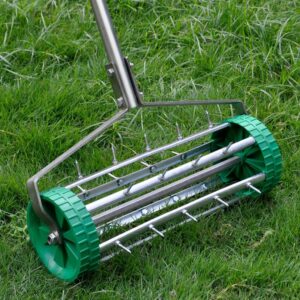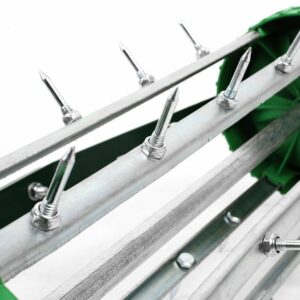There are a few aspects of lawn maintenance that may not come particularly naturally to the standard lawn owner. Yes, you’re aware that you need to mow your turf regularly, and yes, giving it a drink when it’s thirsty is important. But over and above these basics, the nuances of good lawn care may be lost on you. As long as it’s alive, that’s what counts, right?
If you’re happy with a lawn that looks okay, then sure, mowing and watering may well be enough to keep it alive. But if you take real pride in your lawn, and want it to look the best it possibly can, then you’ll need to take a more holistic approach to turf maintenance. You’ll need to consider things like fertilising and dethatching. You’ll also need to consider aeration.
Aeration is the process of spiking the soil of your lawn in order to allow it to breathe. Aeration, with either a garden fork or a purpose built machine, allows oxygen to enter the soil. But why is this important for your lawn? Let’s take a look.
Why should I aerate my lawn?
The engine of your lawn is its roots. They ingest the nutrients and moisture that are vital for the growth of the plant. But over and above water and food, the roots also need access to oxygen in order to do their best work. If your soil is dense, whether that be due to its make-up (such as soils that are clay based) or for the pure fact that it’s been compacted over time (such as happens in high traffic areas), the water, oxygen and nutrients are unable to penetrate it, and the roots of your lawn will suffocate, affecting its performance.
By aerating your lawn you’re opening it up to the outside world, allowing the oxygen, water and nutrients to penetrate the surface and reach the roots. With the roots breathing, your lawn will be healthier, stronger and better looking. It’ll be more capable of fighting off pests and diseases, and will be able to better cope with the testing conditions that the Australian climate so often delivers.
Does my lawn need to be aerated?
It could be that the soil of your lawn isn’t actually dense or compacted enough to warrant aeration. But more commonly, aeration forms an important part of a good lawn care routine. Aeration is advisable on your lawn if:
The lawn experiences high traffic. Pets and children can compact the soil over time if they use the lawn to play.
The soil of your lawn is clay-based. Clay soils are far denser than sand, loam or any other soil type, which can make it difficult for air, water and nutrients to penetrate the surface.
The lawn has a thatch problem. Excess thatch will make it difficult for the good stuff to penetrate the soil. Take out a small square of lawn with a shovel. If the layer of thatch is more than 1cm thick, you should dethatch then aerate.
But over and above these reasons, aeration is just a good habit to get into if you want your lawn to be the best it can be.
How do I aerate my lawn?
Aeration is the simple process of perforating the soil with small holes. This can be done either with the use of a simple garden fork, or with a purpose-built machine. McKays’ Rolling Lawn Aerator, for example, is a push-along machine that features 27 spikes placed on a steel drum. This machine will be able to do in minutes what might take an hour to do with a garden fork.
Before aerating, wet your soil to allow for easier penetration. For those using a fork, aim for your holes to be around 10cm apart, and penetrate approximately 5cm into the soil. In severely compacted areas bring the holes closer together, or give the area multiple rolls with your machine.
Aeration is a simple job, but one that is forgotten or ignored by backyard gardeners all too often. But if you want your lawn to be the talk of the street, you now know that aeration is a pivotal piece of the puzzle.



